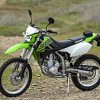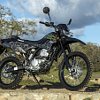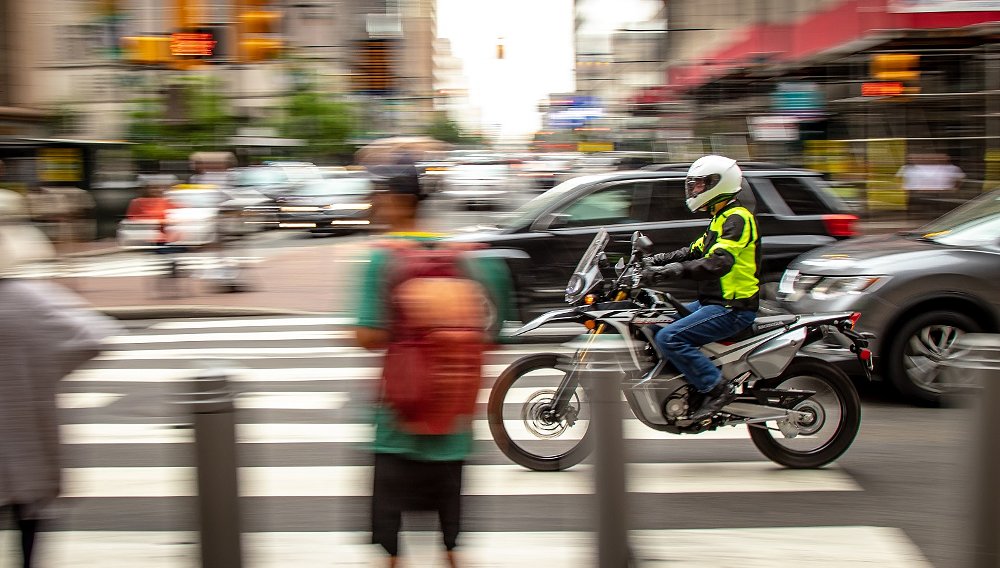Imagine a horizon of rolling green hills, a flock of sheep grazing, and a blue sky dotted with puffy white clouds as far as the eye can see.
Listen closely and you can hear the rush of the creek nearby and the breeze rustling in the oak trees. Breathe in the crisp morning air and feel the gravel crunch beneath your tires. This is the dream that new dual-sport enthusiasts are chasing — an escape to a bucolic paradise with winding trails and wide-open fire roads.
In a world enveloped in chaos, there is something deeply attractive about escaping it all on two wheels to a place that is serene and slower paced. It’s exactly the scene Kawasaki painted as the backdrop for the launch of the new 2021 KLX300 in Folsom, California. Is the KLX300 the dream bike that completes the picture by getting you there? I spent an entire day putting the KLX300 through its paces to see if it lives up to the expectation.
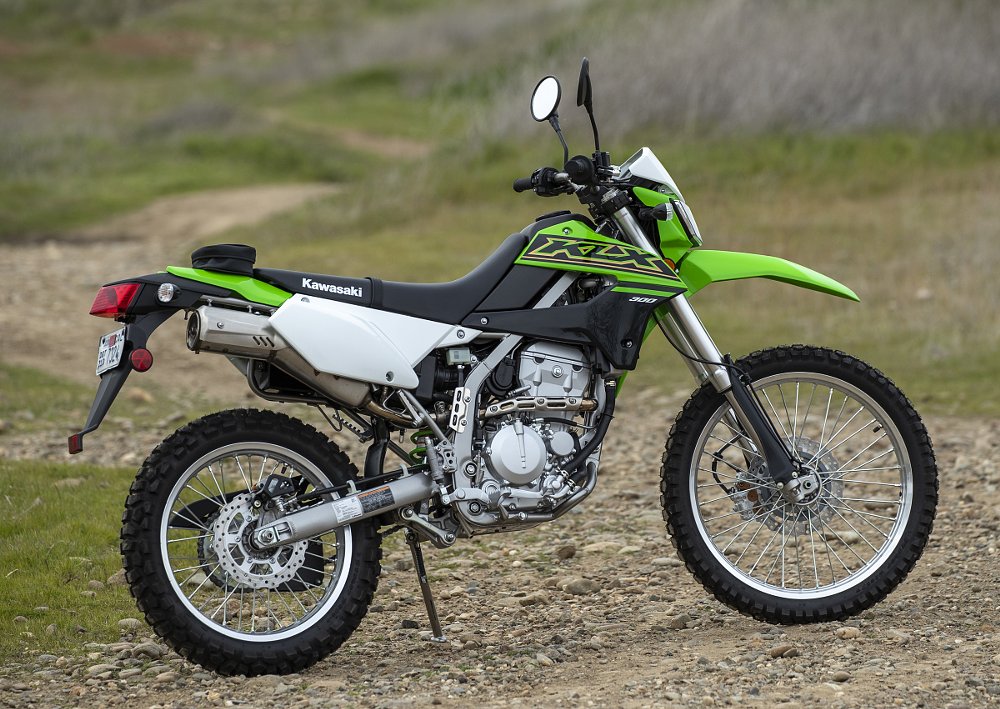
Meeting the 2021 KLX300
At first sight, it's apparent the KLX300 shares a number of styling cues with its racey cousins in the KX family. Sharp lines and angles define the front fender and cowl, but from there the stock mirrors, dual-sport tires, and DOT street trimmings help the KLX300 feel a bit more beginner-friendly. I rode the Fragment Camo Grey colorway and the blacked out rims, frame, and swingarm, coupled with the derezzed monotone camouflage graphics, really suited my fancy.
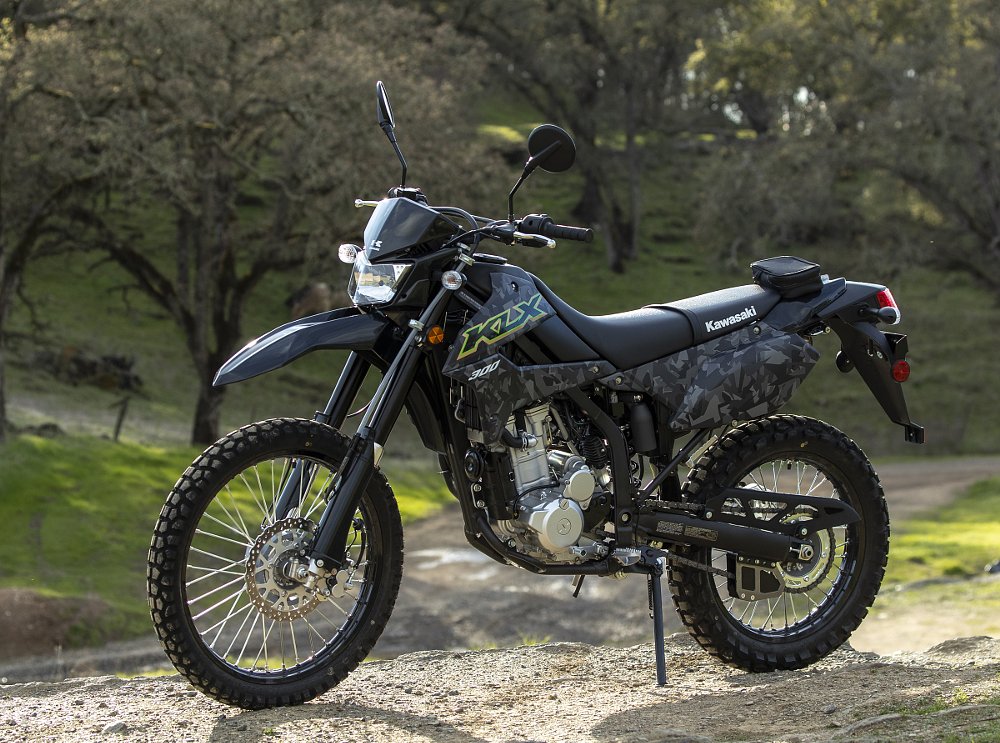
For a short rider like myself (five feet, four inches tall with a 31-inch inseam), the 35.2-inch seat height results in some tippy-toeing. At most stops I had to rest on one foot, as two planted feet was not an option. The KLX300 does achieve a happy middle ground for the shorter rider, though, with a box-and-tubular-section high-tensile steel perimeter frame that creates a slimmer width in the saddle. I also found the seat had reasonable squish and after a long day of riding I can confirm no saddle sores or aches.
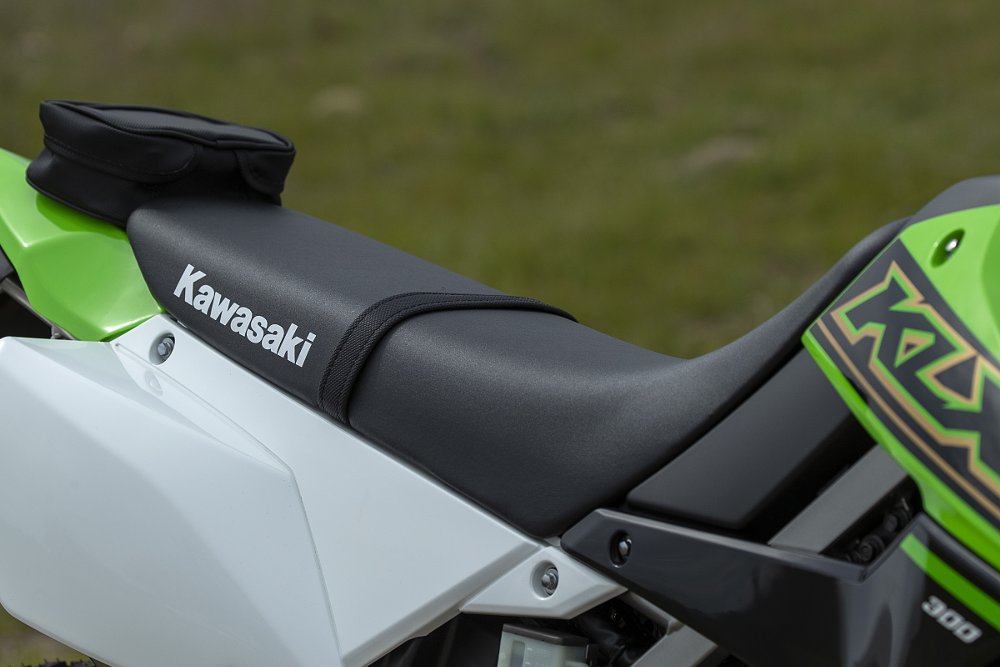
Moving on to the general rider ergonomics of the bike, I found the handlebar and footpegs all to be in predictable and neutral positions. The KLX300 does not have adjustable levers, and although the front brake and clutch were reachable, if I had the option I probably would have brought them in a bit for easier engagement.
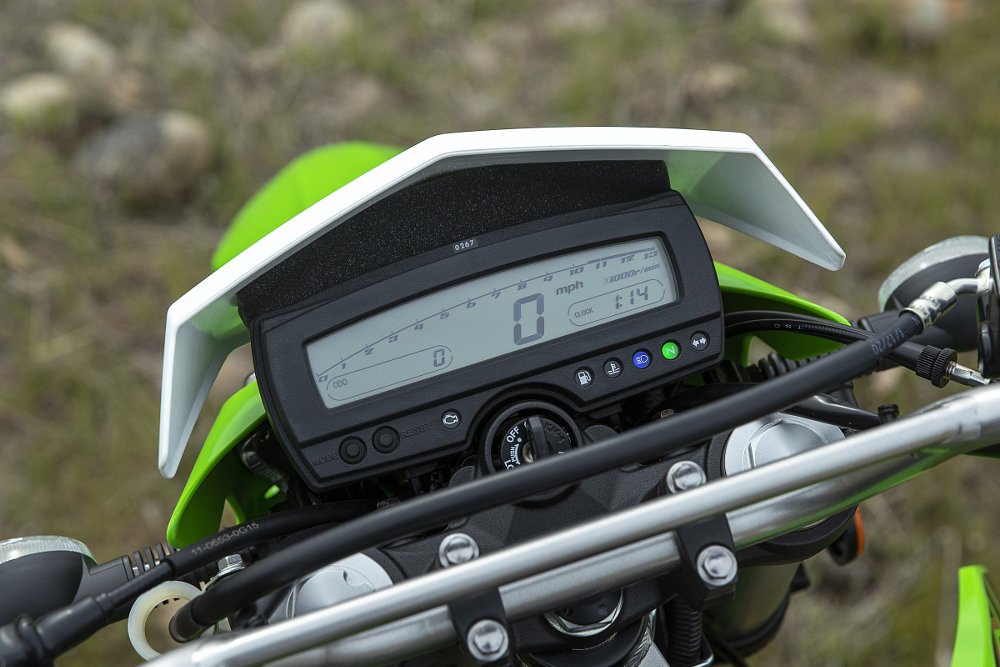
I have ridden my fair share of dual-sports and I like digital dash on the KLX300 better than most. It was easy to read in all applications and conveyed an impressive amount of data for this segment of the market. Unlike carbureted KLX bikes of yesteryears, which were known for being cold-blooded, the KLX300 is fuel-injected with an electric start ignition, so firing up on the brisk morning of our ride was a non-issue. After this quick acquaintance with my KLX300 it was high time to get on the road.
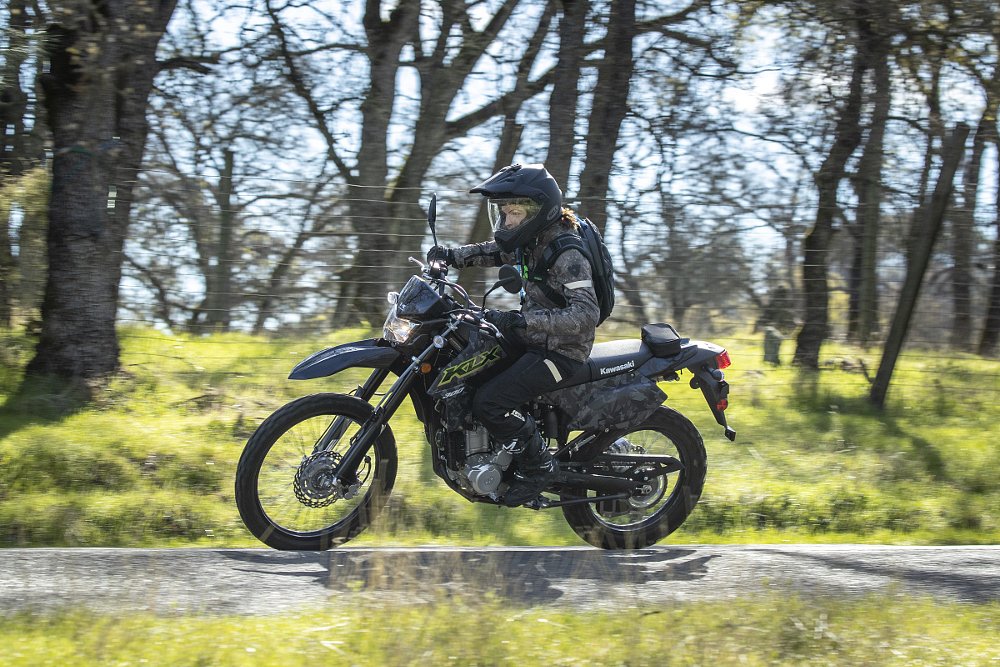
The unavoidable freeway on the road to paradise
For most of us, arriving at the aforementioned dual-sport fantasy land often involves traversing some far less tantalizing roads. A bunch of city stop-and-go, a handful of freeway exits, and then some charming country roads that finally unfold into the dirt trails we crave. Our commute on the KLX300 was more or less the same and it is on the pavement where the new punched-out 292 cc liquid-cooled single-cylinder engine is very noticeable. Whereas the KLX250 predecessor was often cited by many riders as underpowered for most street use cases, the KLX300 lays these doubts to rest. The KLX300 easily kept up with the fast pace California freeways are well known for without breaking a sweat and with no speed wobbles. For riders who clock primarily freeway miles, the lack of wind protection, vibrating mirrors and general “buzziness” at the uppermost limits of this motor would be the downsides. For the dedicated dual-sport enthusiast, however, the KLX300 is more than capable of getting you out to your favorite trailhead and it's also a fine option for light commuting.
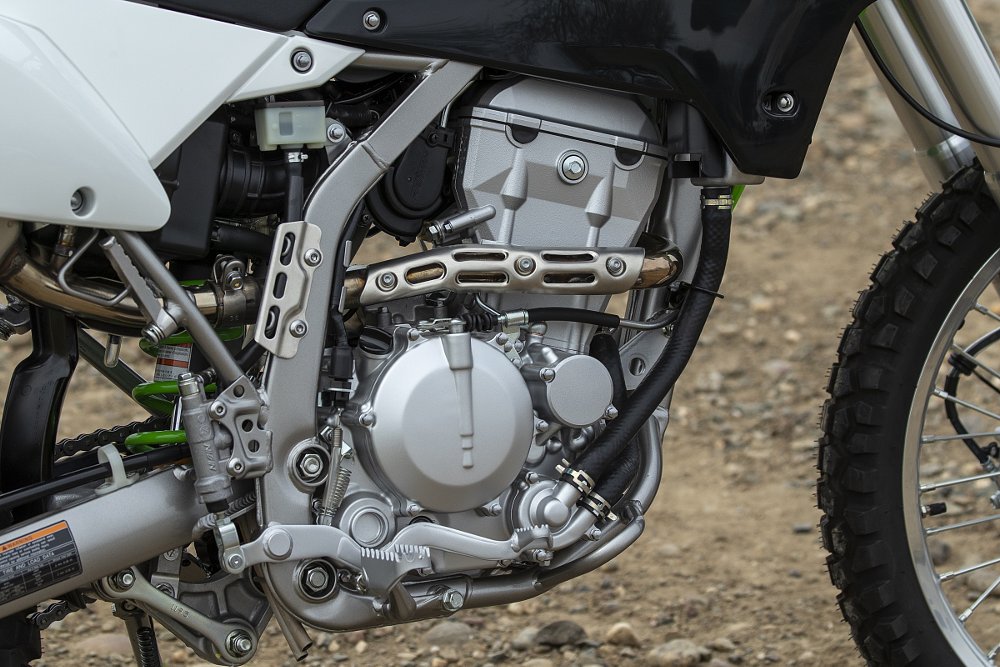
Once we exited the freeway, the 14/40 drive ratio provided excellent low-to-mid-range power for quick blips on our backcountry road excursion. Though the motor served well for all on-road applications, I did find the 21-inch front wheel and dirt-focused tires created a “flighty” sensation in the tight corners. The front braking system consisted of a Nissin twin-piston caliper paired with the 250 mm front disc and a single-piston caliper paired with 240 mm rear disc. Stopping power is adequate on pavement. The brakes lack that harsh initial bite that more expensive street machines offer, but that's a worthy trade-off as sharp brakes in the dirt can lead to some hairy situations.
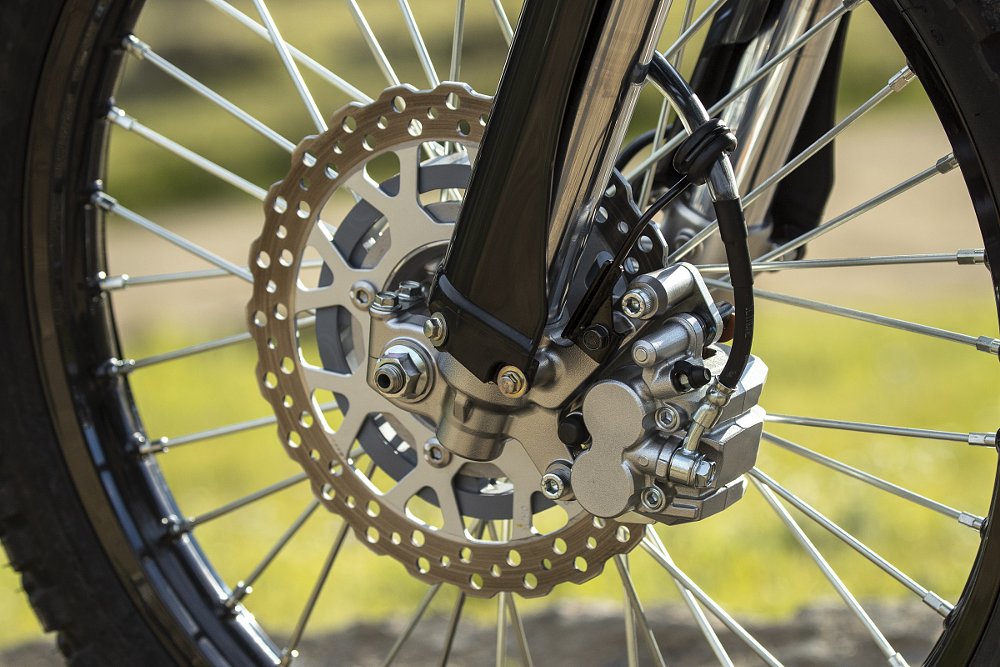
I didn’t feel any “wallowing” from the chassis and suspension through the speedy sweepers or esses. Considering your average dual-sport bike is not set up for canyon carving, the KLX300 still makes the backcountry roads a pleasant experience at a reasonable pace. Where the KLX300 really started to shine was once the pavement dropped off and we were into our first set of gravel fire roads.
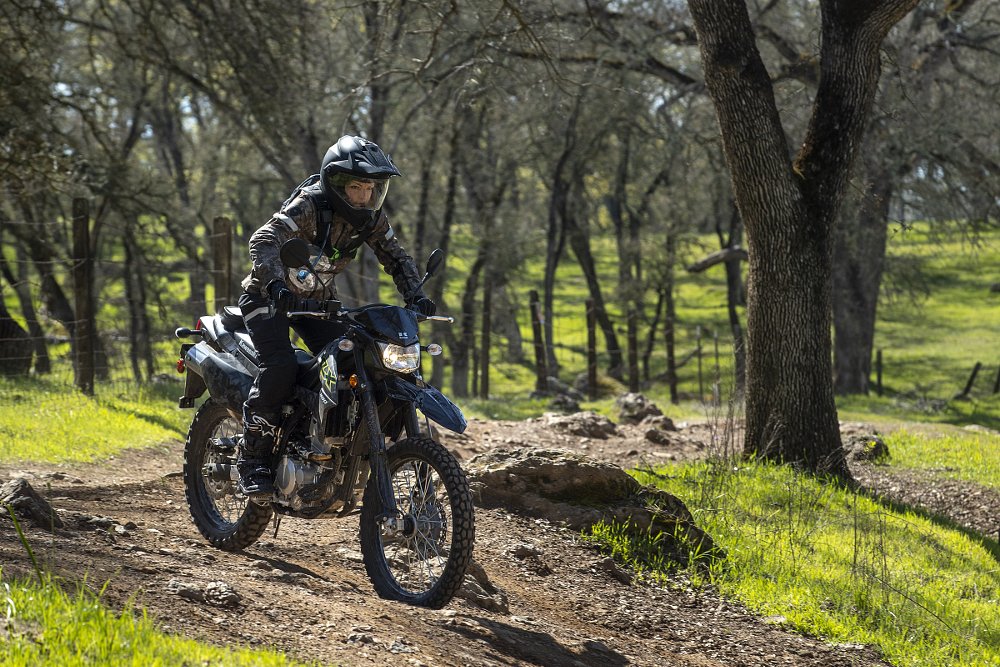
Into the dual-sport dreamscape
With the tedious asphalt roads behind us, it was time to really put the KLX300 to work in its natural environment. In the same way the KLX300 ate up the long, undulating sweepers of the backcountry roads, it happily flowed through the initial high-speed gravel fire road with no protests. As the fire road tightened up, we encountered new obstacles and the KLX300 began to show its mettle.
The KLX300 uses the same cam profiles as its off-road-focused cousin, the KLX300R, and coupled with the lightweight flat-top piston, the 11.1:1 compression ratio resulted in some very usable power down low. I found the gearing and transmission to be very forgiving and some quick feathering of the clutch combined with throttle blipping helped the KLX300 crawl and climb through rougher terrain.
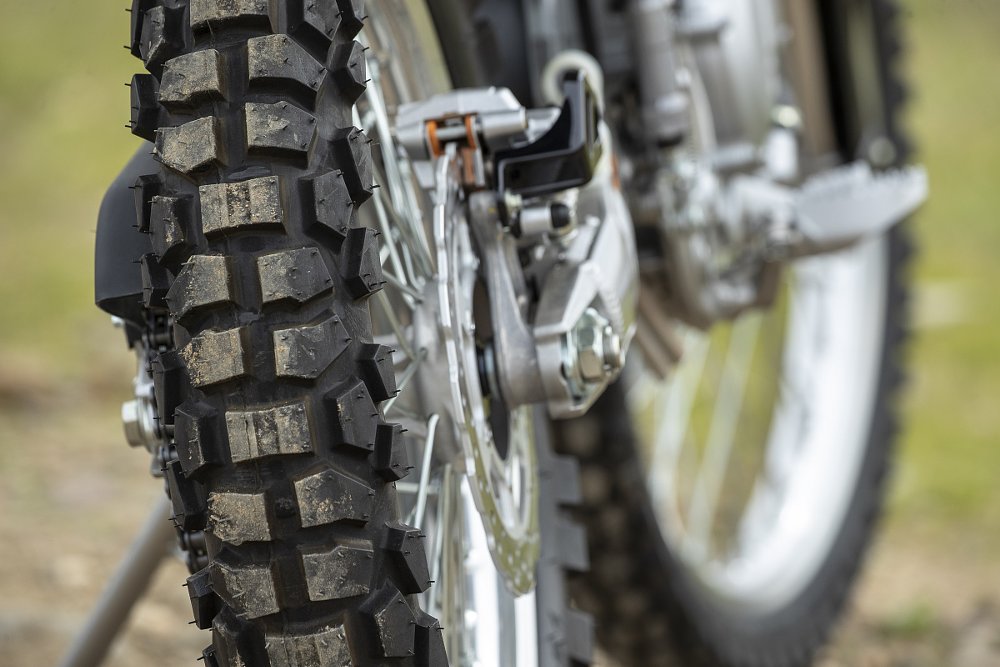
Suspension-wise, the KLX300 is outfitted with a 43 mm inverted fork with 16-way adjustable compression damping, and out the rear a Uni-trak gas-charged shock with preload adjustability, 20-way compression and 30-way rebound damping adjustments. On the trail, we put all 10 inches of wheel travel at the front and 9.1 inches of travel at the rear to work.
I would like you to know, dear reader, that I went the extra mile for you and found the true bottom of this deep travel suspension off a steep rocky ledge that led to a motorcycle cartwheel, a spectacular flying dismount and applause from the entire riding group. Alright, so this tumble of mine was unplanned, but it did help shine a light on the toughness of the KLX300. Despite bouncing off several rocks on its descent, the only damage to the bike was a bent, not broken, clutch lever. Not to mention that Kawasaki is on to something with that camo graphic, as it was difficult to identify any scratches in the aftermath of the crash.
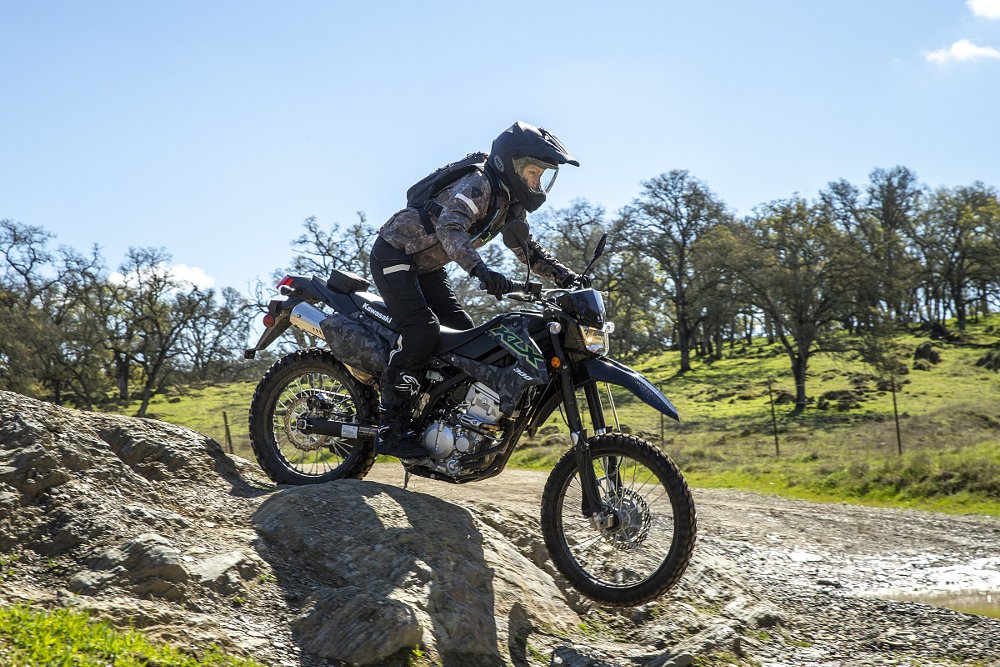
Weighing in at 304 pounds, the KLX300 isn’t the lightest off-road bike, but is still a far cry from having to heft up some of the bigger dual-sports and ADV bikes on the market. With the addition of some hand guards, I am betting the KLX300 can take many beatings on the trail and still perform reliably and without much fuss.
Remember my misgivings about the brakes on the road earlier? Here in the dirt, the front and rear brake used in concert resulted in confidence-inspiring maneuvers through tighter terrain and the occasional playful rear skid. Speaking of tight maneuvers, the KLX300's 26.7-degree rake, 4.2 inches of trail and a 56.7-inch wheelbase made it feel nimble and quick to turn on the trail. It is also worth mentioning that the Dunlop D605 dual-sport tires surprised me with the amount of grip they offered in the off-road environment. I was skeptical at first but appreciated their performance in the dirt.
All in all, I rode back to our base camp really impressed by the KLX300 on this dual-sport adventure.
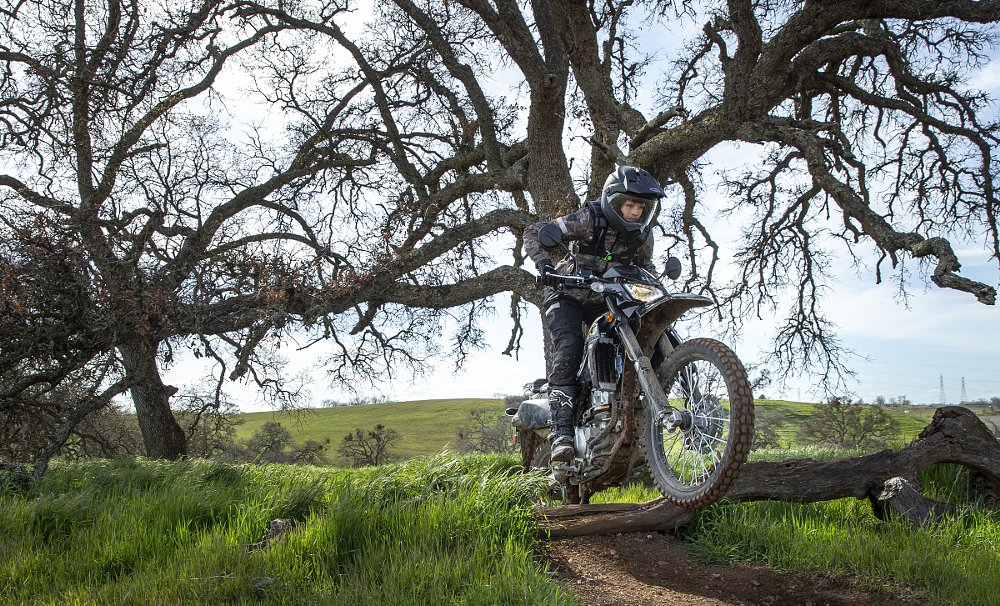
Dual-sport dreaming
I can close my eyes and still see that dual-sport dreamscape like a framed photo — a snapshot memory accompanied by some sore muscles and a smile of satisfaction. I feel happy, accomplished, and content. Dual-sport enthusiasts out there know the feeling I am talking about and if you are among the off-road curious, you are wanting to experience it yourself. For new and intermediate dual-sport riders alike, the Kawasaki KLX300 can be the machine to search for that dreamscape.
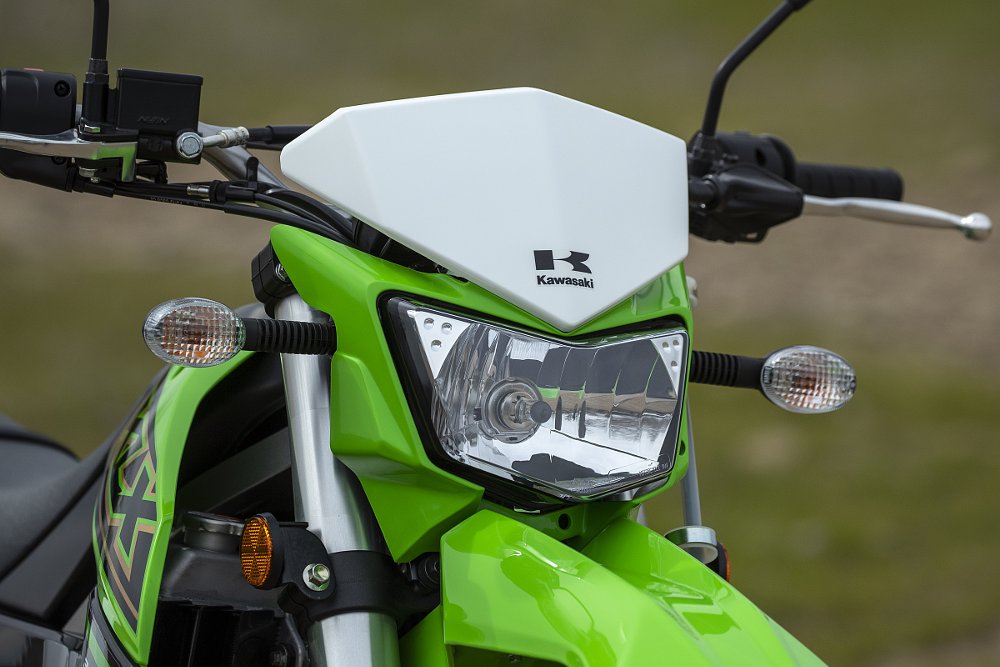
Is it the lightest bike on the market? No. Is it the most powerful bike on the market? No. Is it the most kitted-out with top-level componentry? No. Is the KLX300 super affordable? Yes. Can the KLX300 double as a reliable commuter? Yes. Is the KLX300 ready for the majority of fire roads and single-track that dual-sports are built for? Yes.
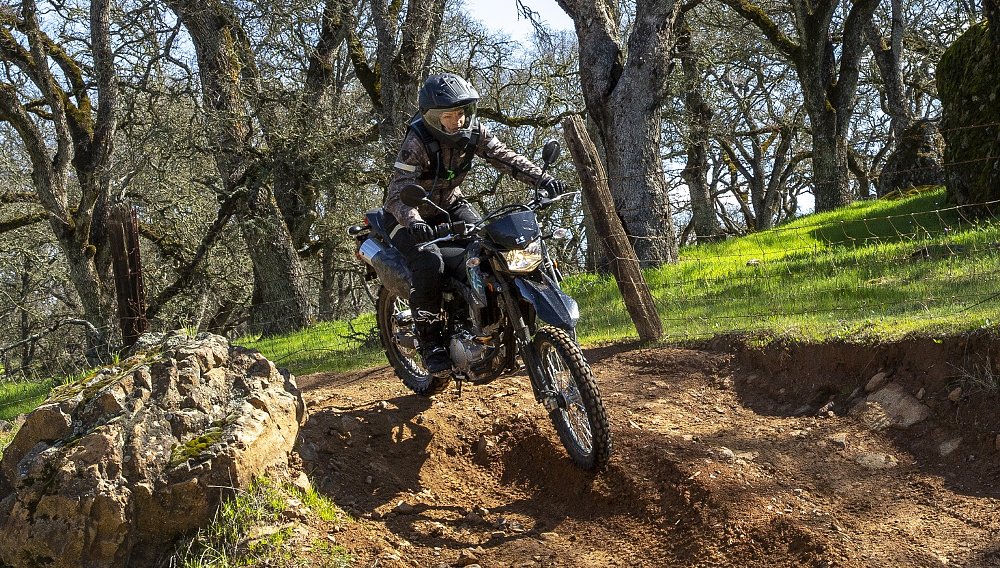
For the $5,599 starting price, the KLX300 is a ton of value and will transport you to your own escape. My advice is to stop dreaming and start riding.
| 2021 Kawasaki KLX300 | |
|---|---|
| Price (MSRP) | $5,599 in Lime Green, $5,799 in Fragment Camo |
| Engine | 292 cc, liquid-cooled, four-valve single |
|
Transmission, final drive |
Six-speed, chain |
| Claimed horsepower | NA |
| Claimed torque | NA |
| Frame | Steel perimeter |
| Front suspension | 43 mm inverted cartridge fork, 16-way adjustable for compression damping; 10.0 inches of travel |
| Rear suspension | Single shock, adjustable for preload, 20-way compression and 30-way rebound damping; 9.1 inches of travel |
| Front brake | Single Nissin two-piston caliper, 250 mm disc |
| Rear brake | Single-piston caliper, 240 mm disc |
| Rake, trail | 26.7 degrees, 4.2 inches |
| Wheelbase | 56.7 inches |
| Seat height | 35.2 inches |
| Fuel capacity | 2.0 gallons |
| Tires | Dunlop D605, 3.00-21 front, 4.6-18 rear |
| Claimed weight | 304 pounds wet |
| Available | Now |
| Warranty | 12 months |
| More info | kawasaki.com |

 Membership
Membership



